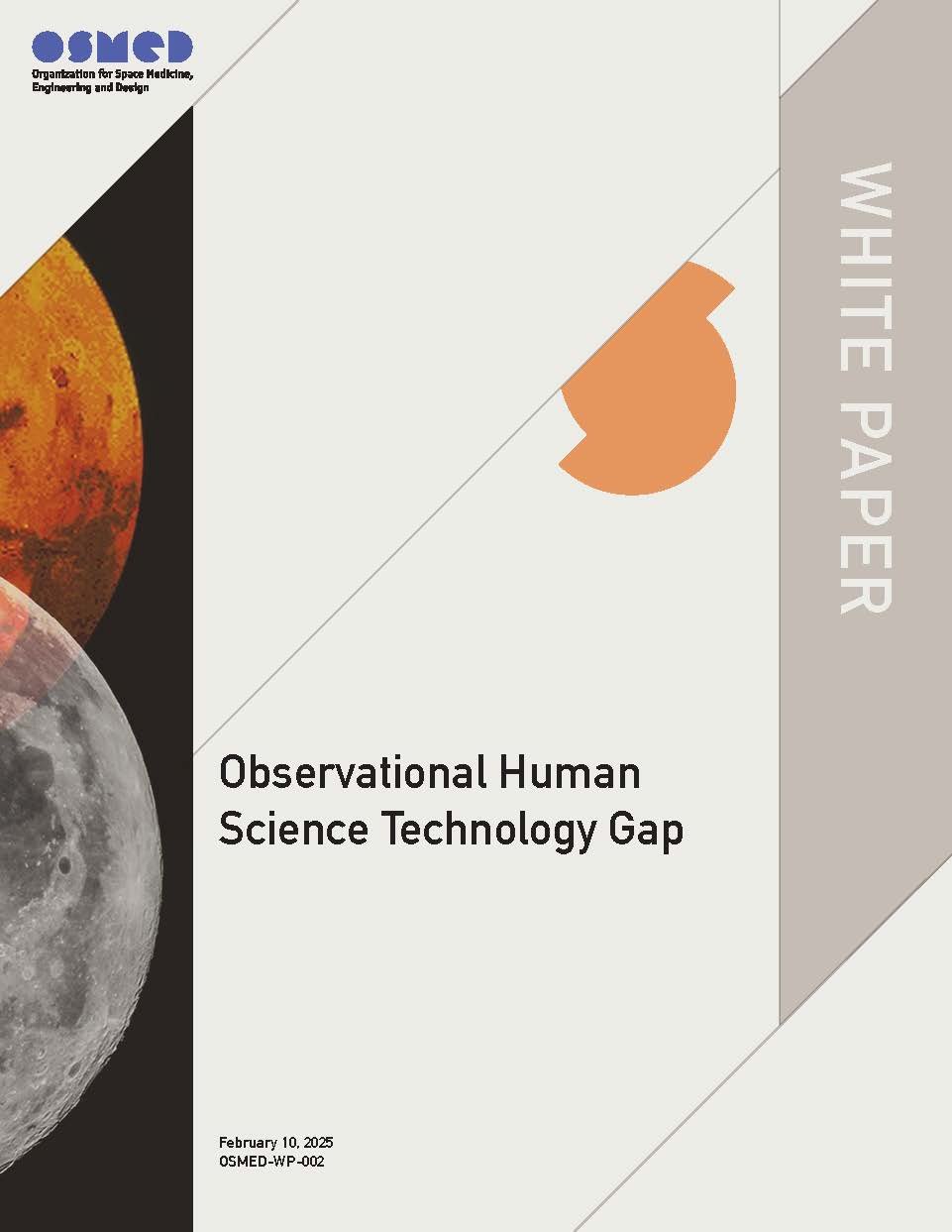Download the White Paper
In 2022 NASA released their Moon to Mars Objectives document and on an annual basis since then the Moon to Mars Program office has been holding Architecture workshops on an annual basis to enable conversation with both industry and international partners and the public. The conversations focus on how to architect the Moon to Mars Program to ensure that capability gaps are identified and addressed throughout the program and that ultimately safe and successful lunar and Mars programs can be built.
OSMED supported the Industry Architecture Workshop February 12-14, 2025 at the National Academies of Science in Washington, D.C. As a result of conversations with NASA Moon to Mars program office at our December conference in Maui, HI, OSMED gathered our communities of expertise and provided three short white papers on capability/technology gaps that NASA should address to ensure that the Artemis program is intentionally capturing the insights needed to reduce the risks of a first Mars mission and to ensure we learn enough to support humans living and working in space and at the Moon in the coming decades.
OSMED-WP-001 discusses the lack of an integrated Crew Health and Performance System for the Artemis mission campaigns.
OSMED-WP-002 discusses that lack of an Observational Science capability that would enable us to collect, analyze, and use data on the environment and humans that helps us to determine the new physiologic normal we establish in human spaceflight.
OSMED-WP-003 discusses the lack of in-situ Laboratory Analysis capability for human bodily fluids/tissue that enables a rapid turn-around of science and supports medical decision-making capabilities. The bulk of human laboratory science that has been done on the International Space Station has been sent back to Earth. Investing in the ability to truly do the physical analysis, data collection, and analysis is critical to understanding the human system risks we face in sustained lunar presence and a Mars campaign.
Download the White Paper
The Future of Human Spaceflight
As space exploration advances beyond low Earth orbit, ensuring astronaut safety and mission success requires a fundamental shift in how we integrate engineering, medicine, and design. This white paper explores the urgent need for interdisciplinary collaboration to mitigate risks and optimize human performance in space. Through historical analysis, case studies, and forward-looking insights, the paper outlines strategies to revolutionize spacecraft systems, habitats, and medical preparedness. Download now to discover how the future of human spaceflight will be built on seamless integration across disciplines.





